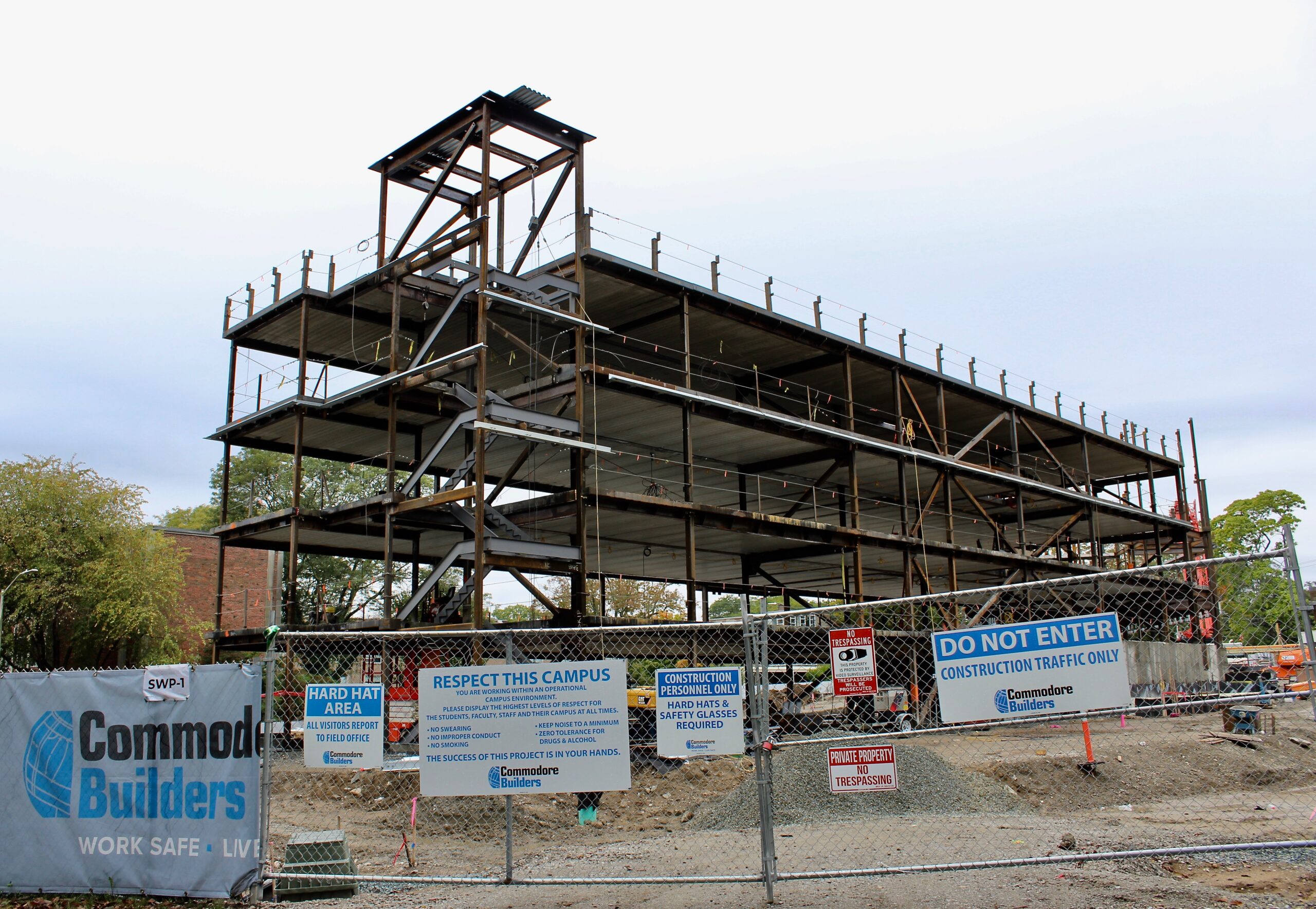On May 18 2018, a groundbreaking ceremony was conducted to begin the construction of Wheaton’s new residential hall. Since then, Wheaton has released a page on their website dedicated to the construction of the residential hall, which includes an interactive campus map and a time-lapse video of the progress.

As described on Wheaton’s website, the new residence hall, located near Pine Street and adjacent to Young, McIntire, Clark, and Meadows, will be about 45,000 square feet with 178 beds for incoming freshmen students. The construction is being completed with a partner company, Commodore Builders, and is set to be finished by July 2019, with a planned opening for the fall 2019 semester. The design of the new residential hall illuminates the two main themes that emerged during the planning of the building: community spaces and sustainability.
Each wing of each floor will have a common space for studying, and there will also be a social lounge at the center of each floor to bring students together. On the northern wing’s first floor, there will be a 2,000 square foot common space that will be open to all students, not only those who live in the residence hall. This space will be accessible for socializing and group work, as well as meetings, programs, and events. An outdoor patio will also be available for student use. The residential hall will be positioned to create a new quad area with Meadows and YMC, which will have a fire pit and also be designed to hold performances and other activities to bring students together.
The new residence hall will be constructed to meet Passive House Standards, which is a thorough and voluntary standard for energy efficiency that reduces a building’s ecological footprint. Thus the new building is designed to use 70 percent less energy than one that is built to current codes. Abiding by these rules, the residential hall is being constructed using highly insulated airtight methods, and will have efficient heating, cooling and lighting systems. It will also have solar panels to supply more than 75 percent of the building’s electricity usage.
In an email sent out by Edward Burnett, the associate dean for campus life, on August 26 2018, Burnett wrote that students should be aware that there might be some noise disruption to neighboring residence halls because of the construction, but that it will hopefully “be lessened as the year progresses and construction moves to the interior of the building.” Burnett also mentions that safety is an utmost priority as construction vehicles travel to and from the work site, and because the site is monitored by staff and video surveillance, “anyone found in the work area will be referred through the student conduct process.”
After reaching out to Burnett through email, he wrote that he does not have any new information that has not already been published about the construction. Though he is not directly involved with the construction itself, he has been involved with the team that is “starting to explore the furnishings (especially for common areas) and [is] planning an event where the campus can come try different pieces out sometime later this year.”
